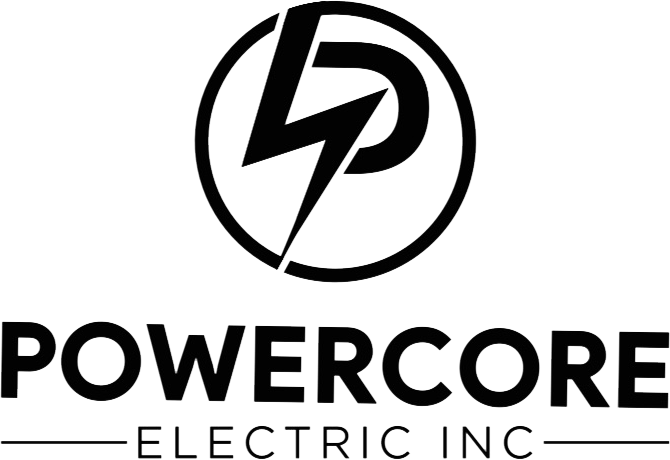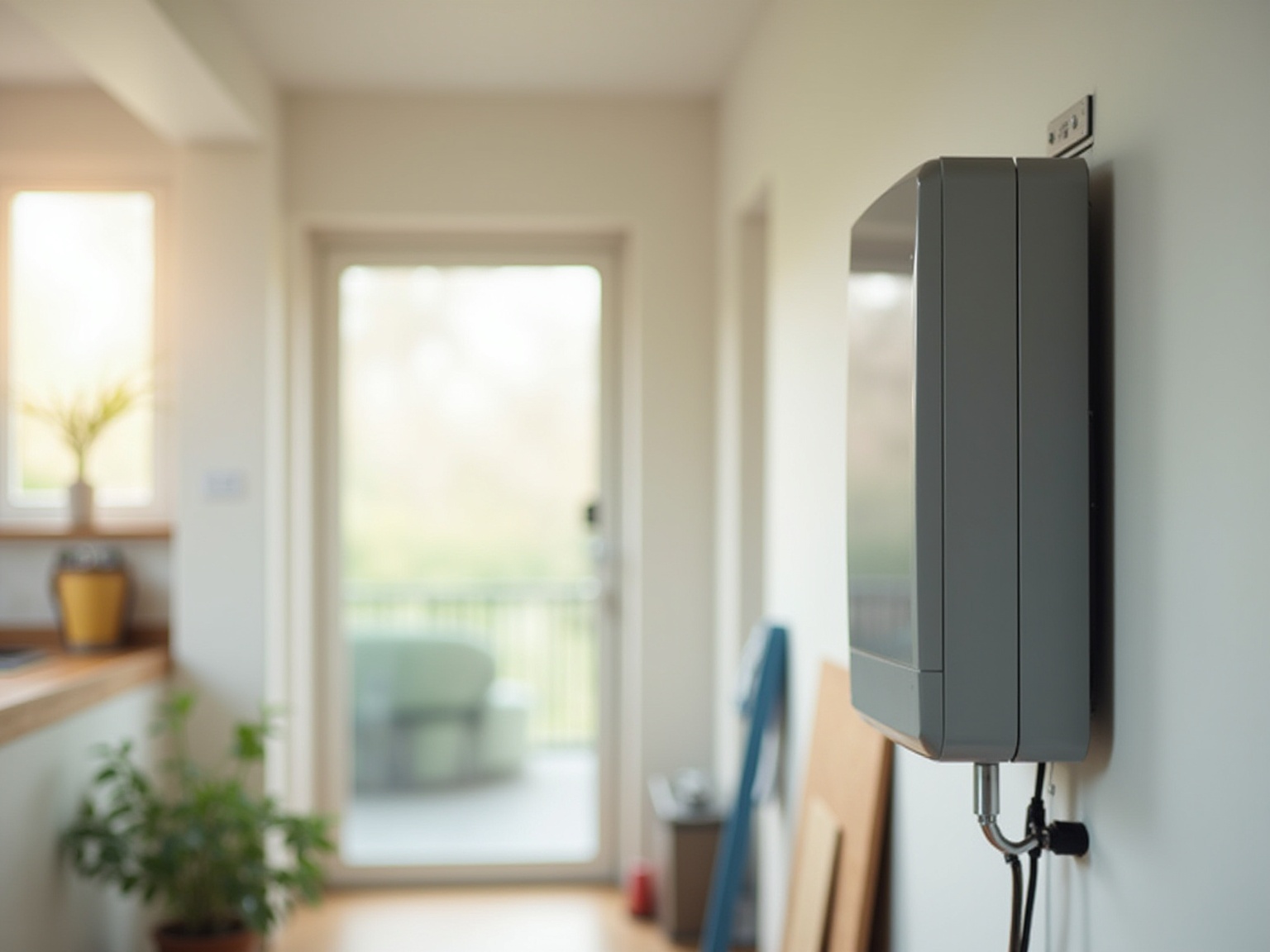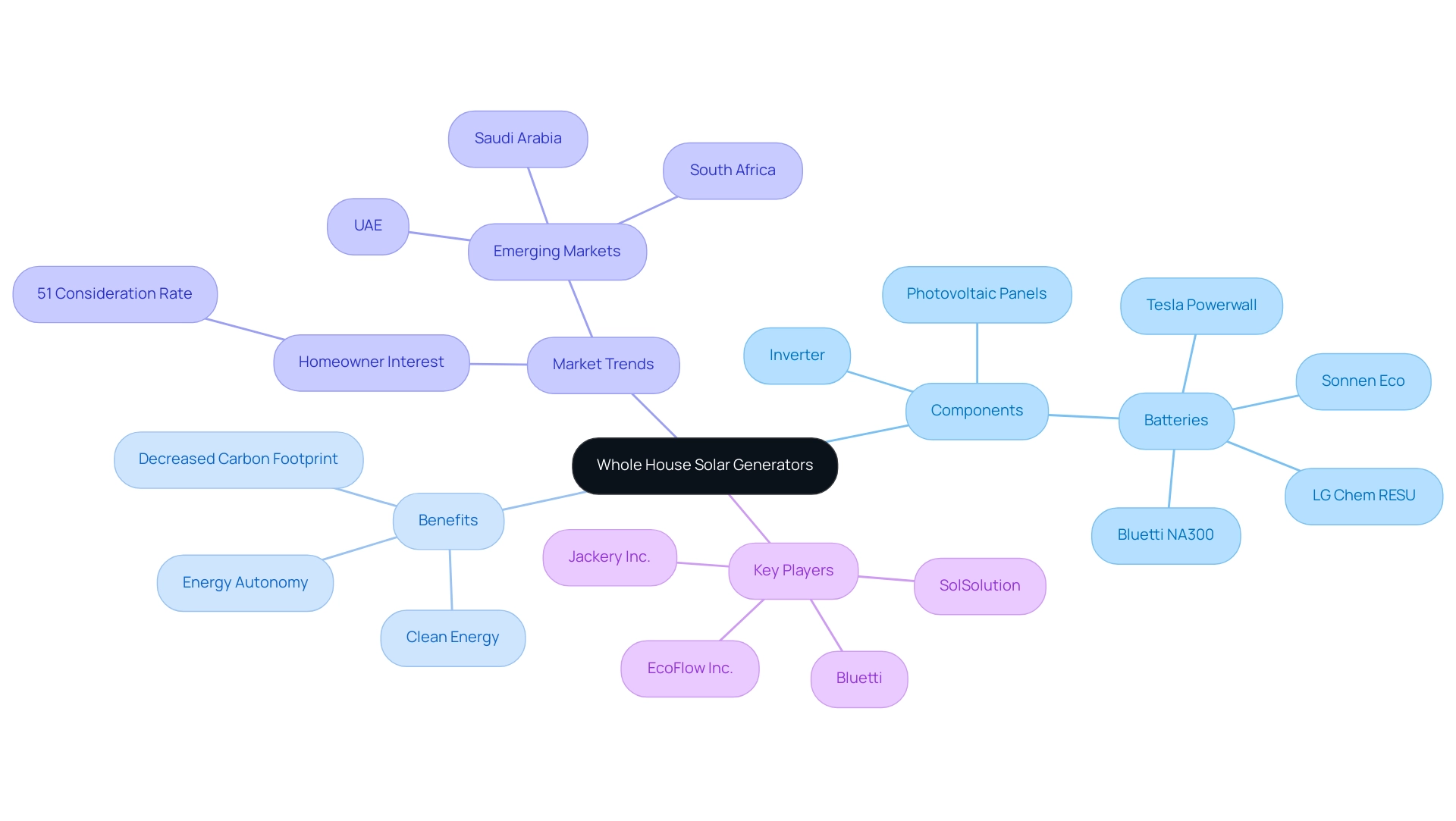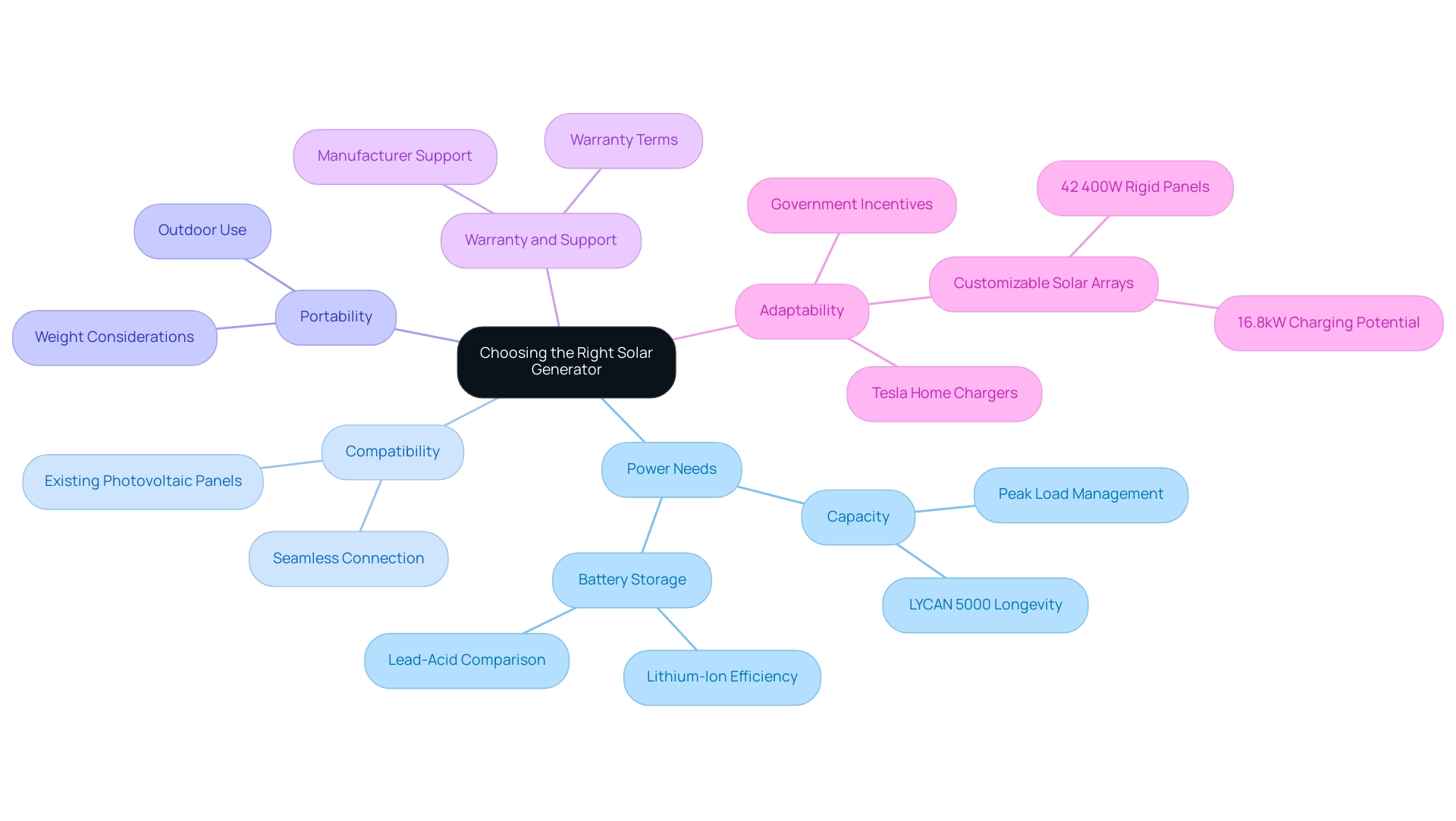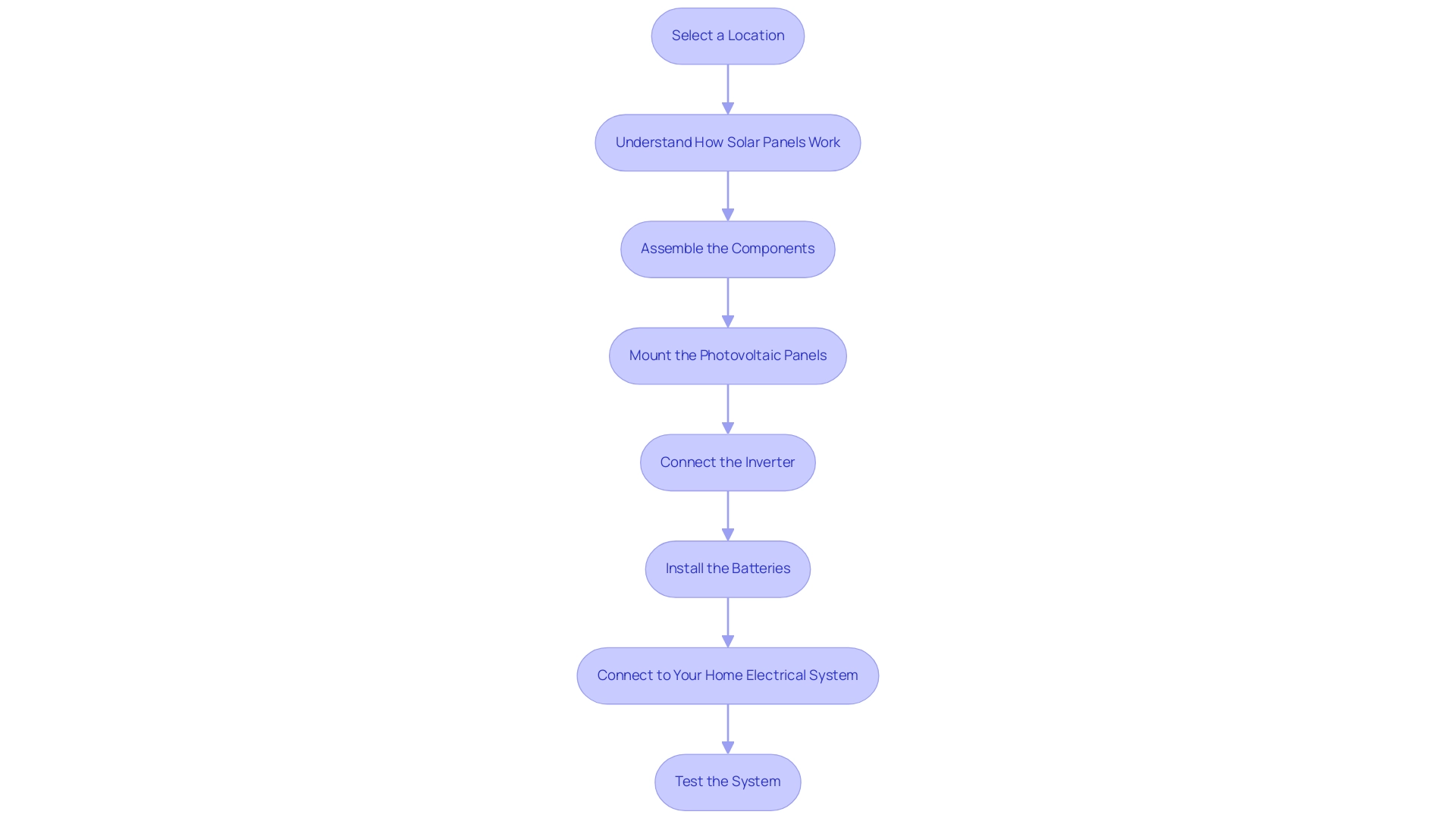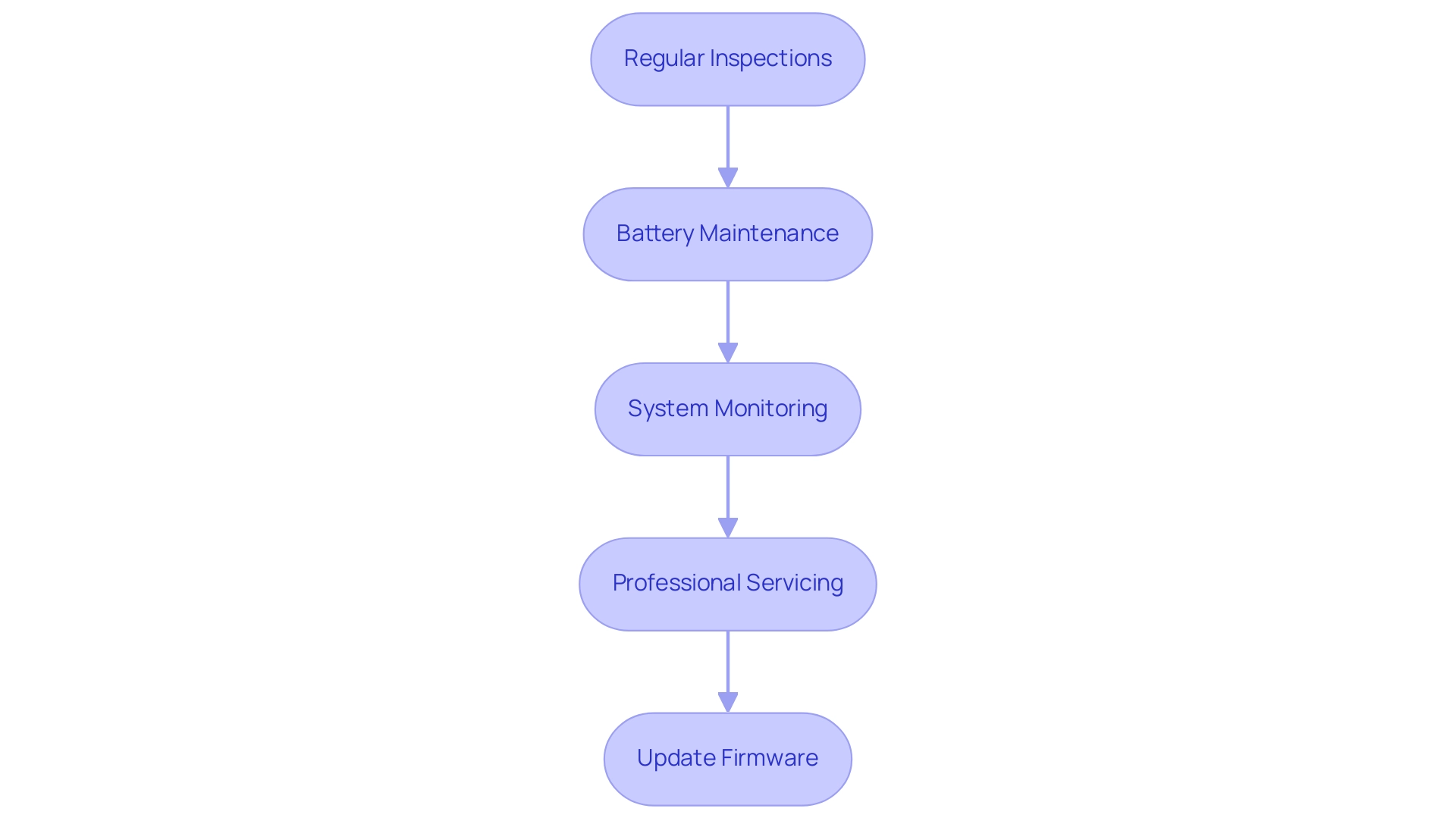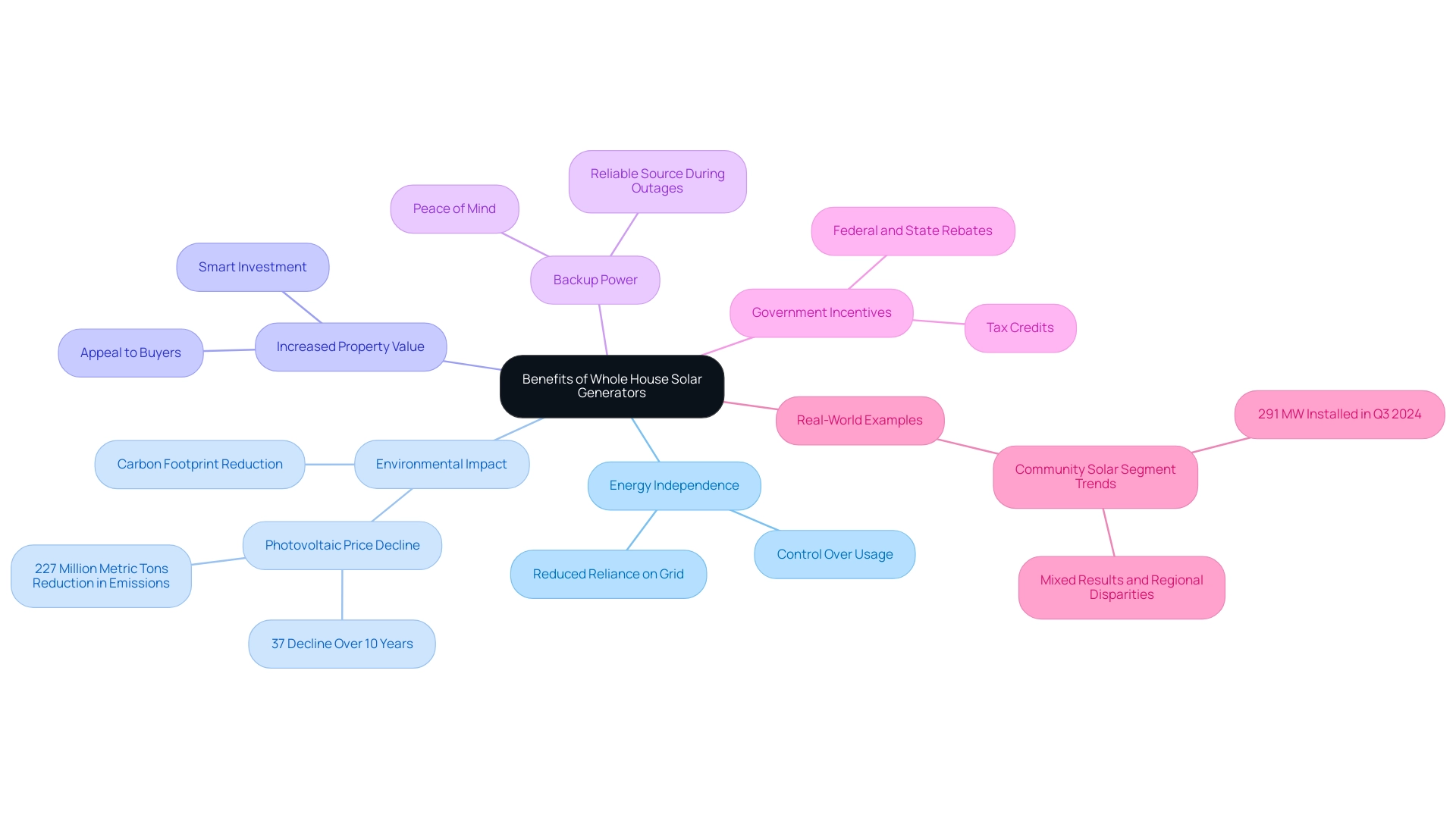Overview
Choosing and installing solar generators for whole house power involves assessing energy needs, selecting compatible components, and following a structured installation process. The article outlines essential considerations such as power requirements, battery options, and maintenance tips, while emphasizing the importance of proper installation and regular upkeep to ensure optimal performance and energy independence.
Introduction
Harnessing the sun’s power has never been more accessible, and for homeowners looking to embrace sustainability, whole house solar generators offer a promising solution. These innovative systems allow families to tap into renewable energy, significantly reducing their reliance on traditional power sources while enjoying the benefits of lower energy bills.
With components like solar panels, inverters, and batteries working in harmony, these generators not only provide electricity but also contribute to a cleaner environment. As interest in solar technology surges, understanding how to choose, install, and maintain these systems becomes essential for those eager to invest in a greener future.
This article delves into the ins and outs of whole house solar generators, offering guidance on everything from selecting the right model to ensuring optimal performance, so homeowners can confidently embark on their solar journey.
Understanding Whole House Solar Generators: A Comprehensive Overview
Complete house power solutions are remarkable setups created to supply your whole residence with the abundant energy generated by solar generators for whole house. At their essence, these setups comprise photovoltaic panels, an inverter, and batteries, all collaborating to capture and store sunlight for your household requirements. Unlike conventional generators that rely on fossil fuels, solar generators for whole house provide a clean and renewable power source, allowing you to enjoy peace of mind while decreasing your carbon footprint.
Understanding how these setups function is crucial for eco-conscious homeowners eager to cut down on utility costs and embrace sustainable living. They can seamlessly power everything from lights and appliances to heating and cooling systems, making solar generators for whole house a versatile solution for achieving energy autonomy. In fact, with 51% of homeowners in the Mountain region considering panel installations, it’s clear that the interest in photovoltaic technology is on the rise, reflecting a growing desire for eco-friendly options in our daily lives.
When selecting battery options, it’s essential to consider battery capacity and power ratings, as these factors significantly impact residential energy management and sustainability. Key participants in the market, including Jackery Inc., EcoFlow Inc., SolSolution, and Bluetti, are leading this technology, providing an array of power solutions to meet diverse requirements. Significantly, Bluetti recently introduced the sodium ion power system NA300 along with the compatible battery module B480, highlighting progress in renewable energy technology.
Additionally, as the generator market begins to emerge in regions like Saudi Arabia, the UAE, and South Africa, it highlights the potential for growth and innovation in this field, resonating with eco-conscious homeowners seeking the latest solutions.
To maintain the efficiency of your panels, consider using eco-friendly panel cleaners. These cleaners not only help in removing dirt and debris but also ensure that your panels operate at maximum efficiency without harming the environment. With the appropriate installation angle and capacity considerations, maximizing your panel output can significantly enhance the advantages of renewable resources, lowering utility expenses and encouraging sustainability.
For the best battery selections, consider options like the Tesla Powerwall, LG Chem RESU, and the Sonnen Eco. These batteries are recognized for their reliability, efficiency, and capacity to integrate smoothly with photovoltaic systems, ensuring optimal storage and management for your home.
Key Considerations for Choosing the Right Solar Generator
When it comes to choosing the ideal solar power system for your home, there are several key factors to consider to ensure you make a wise investment:
-
Power Needs: Start by assessing your energy consumption. Take a look at your past electricity bills to determine how much power you typically require. This step is crucial for understanding your baseline needs, especially if you are considering solar generators for whole house.
Capacity: Look for devices that can manage your peak load. For instance, the LYCAN 5000 can power home appliances for up to 10 years, making it an excellent choice for long-term use. Ensure that the solar generators for whole house can power essential appliances simultaneously, especially during an outage.
Battery Storage: Pay attention to the battery capacity and type. Lithium-ion batteries are often a smart choice due to their efficiency and longer lifespan compared to traditional lead-acid batteries.
-
Compatibility: It’s important to ensure that the power source can seamlessly connect with your home’s electrical system and any existing photovoltaic panels you may have. This compatibility is crucial for enhancing overall efficiency and maximizing your energy use with solar generators for whole house.
-
Portability: If you envision using your generator for outdoor activities or emergencies, consider its weight and portability features. A lightweight option can be a game-changer for travel.
-
Warranty and Support: Lastly, don’t overlook the importance of a solid warranty and customer support options from the manufacturer. This can provide peace of mind, knowing assistance is available if you need it.
As EcoFlow emphasizes, you can add up to 42 400W Rigid Panels to achieve 16.8kW of charging potential! This adaptability in personalizing your power system can greatly improve your autonomy. Furthermore, setting up solar generators for whole house applications can result in significant long-term savings on electricity expenses by producing clean power rather than depending on the grid.
Eventually, the savings from decreased electricity expenses can exceed the initial investment, offering financial independence and control over utility costs. Don’t forget to investigate government programs that might provide incentives to help reduce your initial expenditure in renewable technology, as well as consider Tesla home chargers, which can improve your overall efficiency and convenience at home.
Step-by-Step Guide to Installing Your Solar Generator
Setting up your generator can feel like a big project, but with these friendly steps, you’ll be ready in no time:
- Select a Location: Look for a spot that’s well-ventilated and enjoys sunlight for most of the day. This is crucial for optimizing your system’s performance and ensuring effective power generation.
- Understand How Solar Panels Work: Solar panels convert sunlight into electricity using photovoltaic cells. When sunlight hits these cells, it generates direct current (DC) electricity, which is then converted to alternating current (AC) by the inverter for use in your home.
- Assemble the Components: Gather everything you’ll need—solar panels, an inverter, batteries, and mounting hardware. Having all your tools at hand will make the process smoother and help you understand the functionality of each component.
- Mount the Photovoltaic Panels: Securely attach the photovoltaic panels to your roof or ground mount using the provided brackets. Ensure they’re positioned correctly to capture the sun’s rays efficiently and enhance output.
- Connect the Inverter: Next, connect the inverter to your photovoltaic panels. Always adhere to the manufacturer’s guidelines for wiring to guarantee everything is configured accurately, which is crucial for integrating your system with home power requirements.
- Install the Batteries: Choose batteries that are compatible with your system—lithium-ion batteries are popular for their efficiency and longevity. Connect the batteries to the inverter, checking that all connections are snug to prevent energy loss.
- Connect to Your Home Electrical System: Here’s where it’s wise to call in a licensed electrician. They’ll assist in linking your solar generator to your home’s electrical network, ensuring everything is up to code and safe, allowing you to enjoy the economic benefits of solar energy.
- Test the System: Once everything’s hooked up, give your system a test run! Monitor the output to ensure it meets your energy needs. If you come across any issues, don’t hesitate to contact a professional for assistance.
By following these steps, not only will you contribute to a cleaner environment, but you’ll also embrace the growing trend of renewable energy, particularly through solar generators for whole house applications—an industry projected to see a 33% growth in 2024 alone! Major companies like Amazon, Google, and Meta are investing heavily in renewable energy, with a combined contracted pipeline of over 25 GW. The Inflation Reduction Act is anticipated to enhance the deployment of renewable energy by 46% relative to pre-IRA projections, making now an ideal time to invest in this technology.
Remember, patience and attention to detail will serve you well during this installation journey!
Maintaining and Monitoring Your Solar Generator for Optimal Performance
To keep your energy generator operating at peak performance, here are some essential maintenance tips to follow:
-
Regular Inspections: Make it a habit to inspect your energy panels regularly. Look for dirt, debris, or shading from nearby trees that could hinder their performance.
Remember, a clean photovoltaic panel can significantly enhance power generation. A simple cleaning with a soft cloth and mild detergent can do wonders to restore efficiency. Regular upkeep of solar generators for whole house not only guarantees optimal energy generation but can also increase your home’s resale value, as residences with such installations often sell for a premium.
Interestingly, researchers from the Indian Institute of Engineering Science and Technology have developed a model to estimate dust accumulation on photovoltaic panels, which can help you determine how often cleaning is necessary based on local conditions.
-
Battery Maintenance: Your battery is the heart of your solar system, so monitoring battery levels is key. Regularly check the terminals and clean them to prevent corrosion.
Pay attention to the manufacturer’s recommendations for battery replacement to ensure longevity and reliability. Innovative solutions, like sodium-ion battery technology, are also emerging to enhance power storage options.
-
System Monitoring: Embrace technology by using monitoring software or applications designed to track power production and usage.
This way, you can make necessary adjustments to optimize performance and keep an eye on how much energy you’re generating versus how much you’re consuming. This proactive approach can help you stay ahead of potential issues.
-
Professional Servicing: While DIY maintenance is important, don’t forget to schedule annual professional inspections.
These experts can ensure all components are functioning correctly and efficiently, catching any potential issues before they become costly problems. This is especially important considering the challenges encountered by installers in California, where 69% reported lower sales in 2023. Regular professional servicing can help sustain performance amidst fluctuating market conditions.
-
Update Firmware: Just like your smartphone, your photovoltaic inverter and monitoring devices need updates too!
Keeping them informed with the latest firmware not only enhances performance but also strengthens security, ensuring your setup runs smoothly.
These straightforward yet effective maintenance practices not only extend the lifespan of your solar generators for whole house applications but also contribute to public health benefits by reducing emissions and conserving water compared to traditional energy sources. By ensuring your energy panels are clean and your setup is well-maintained, you’re not just investing in efficiency but also supporting a more sustainable and eco-friendly future for your home. Furthermore, data indicates that the median loss rate for photovoltaic system performance is 0.75% per year, with 90% of systems encountering less than a 2% loss each year, underscoring the importance of regular maintenance.
The Benefits of Whole House Solar Generators: Energy Independence and Beyond
Investing in solar generators for whole house applications can be a game-changer for homeowners, offering a plethora of benefits that go beyond just saving on electricity bills.
- Energy Independence: By harnessing the sun’s power, you can significantly reduce your reliance on the grid. This signifies reduced vulnerability to increasing electricity expenses and greater control over your usage.
- Environmental Impact: Transitioning to photovoltaic power is a significant step toward reducing your carbon footprint. Every bit of renewable power you utilize contributes to a healthier planet.
In the past decade, photovoltaic prices have declined by 37%, which has led to a reduction of carbon emissions by an impressive 227 million metric tons. This statistic emphasizes the considerable ecological advantages of utilizing renewable sources and corresponds with the wider understanding of the financial and environmental benefits of heating solutions for homeowners.
- Increased Property Value: Homes equipped with renewable power systems often experience an uptick in property value. This enhancement not only makes your home more appealing to potential buyers but also signifies a smart investment in your future.
- Backup Power: Imagine having peace of mind knowing you have a reliable backup power source during outages. Solar generators for whole house energy provide a reliable solution, ensuring your home stays powered even when the grid falters.
Moreover, incorporating Tesla home chargers can further improve your energy autonomy by enabling you to charge your electric vehicle using renewable power. Investigating services that clean photovoltaic panels can help maintain efficiency, further benefiting your investment.
- Government Incentives: Don’t forget about the financial perks! There are numerous federal and state incentives, rebates, and tax credits available for photovoltaic installations that can help make this transition much more affordable. Understanding how homeowners can gain advantages from government energy programs is essential for optimizing your investment.
- Real-World Examples: The community renewable segment has seen mixed results, with a reported installation of 291 MW in Q3 2024, reflecting both growth and challenges in various regions. This case study demonstrates the intricacies of renewable power adoption and emphasizes the potential advantages of using solar generators for whole house energy needs.
Furthermore, exploring the best battery choices for sunlight energy can provide homeowners with options that enhance energy storage and efficiency. By embracing sunlight energy, you’re not only investing in your home but also in a more sustainable future for everyone, examining the benefits and drawbacks of various energy solutions, including the innovative panel shingles. Additionally, utilizing top solar panel cleaning services can ensure that your system operates at peak efficiency, maximizing your investment.
Conclusion
Investing in a whole house solar generator is a significant step toward achieving energy independence and sustainability. By harnessing solar power, homeowners can reduce their reliance on traditional energy sources, leading to lower electricity bills and a smaller carbon footprint. The combination of solar panels, inverters, and batteries creates a robust system that not only meets energy needs but also contributes to a healthier planet.
Choosing the right solar generator involves careful consideration of:
- Power needs
- Battery storage
- Compatibility with existing systems
With a variety of options available, from established brands like Tesla and LG to emerging technologies, homeowners can find solutions tailored to their unique requirements. Furthermore, proper installation and regular maintenance are essential for maximizing efficiency and ensuring long-term performance.
Ultimately, the benefits of whole house solar generators extend beyond financial savings. They:
- Enhance property value
- Provide reliable backup power
- Support a shift towards renewable energy
With government incentives and a growing community of solar adopters, now is an ideal time to embark on this journey. Embracing solar energy not only empowers homeowners but also fosters a collective movement toward a more sustainable future for all.
